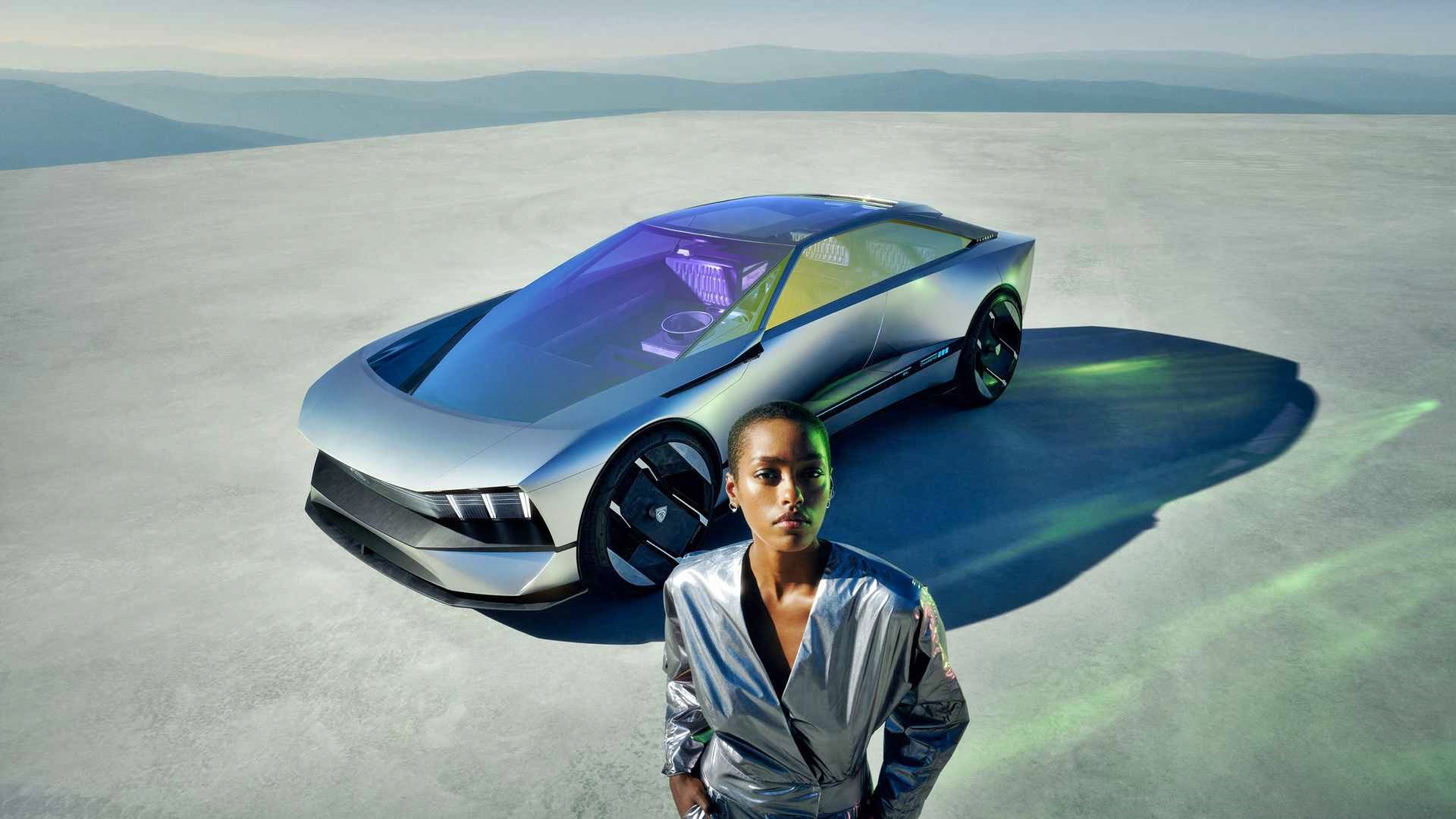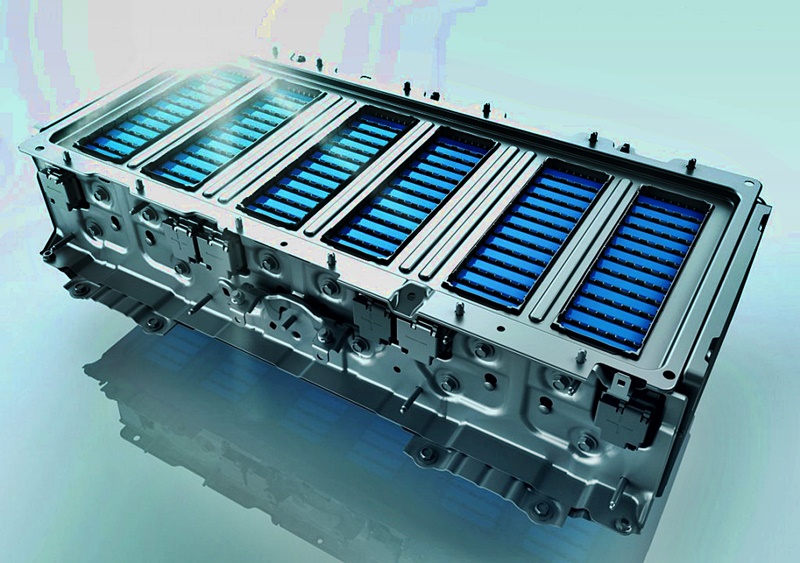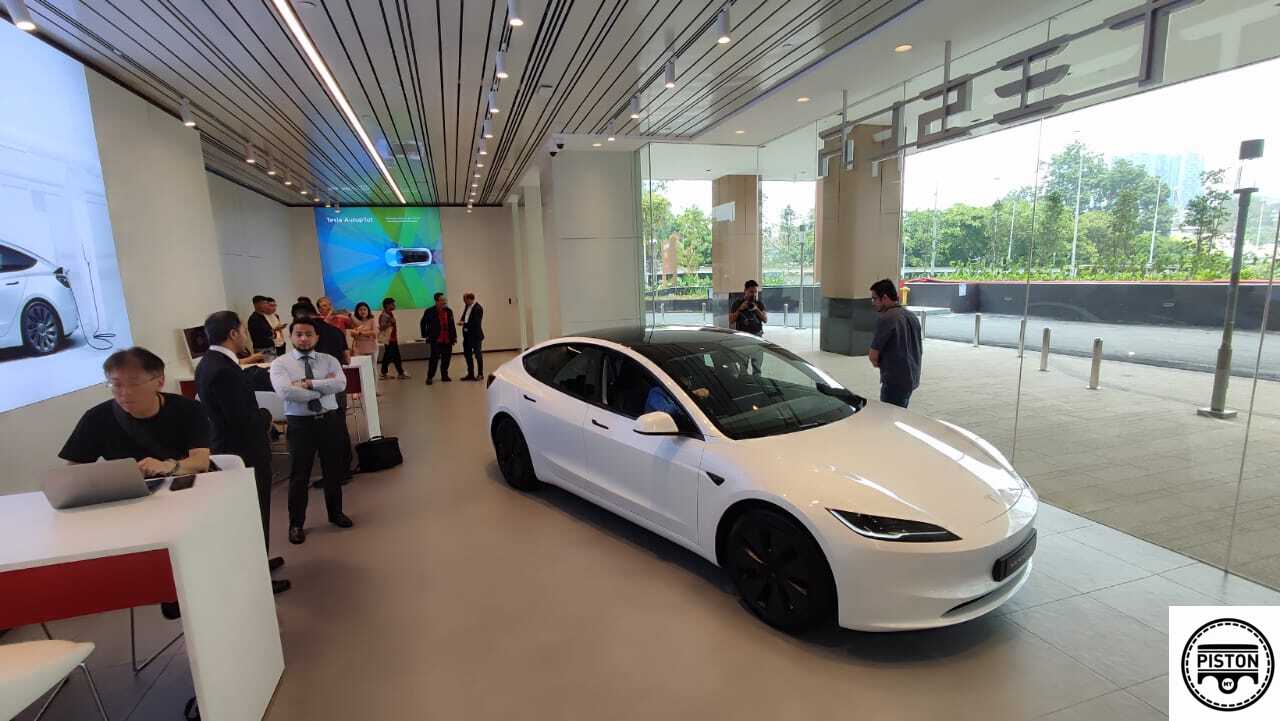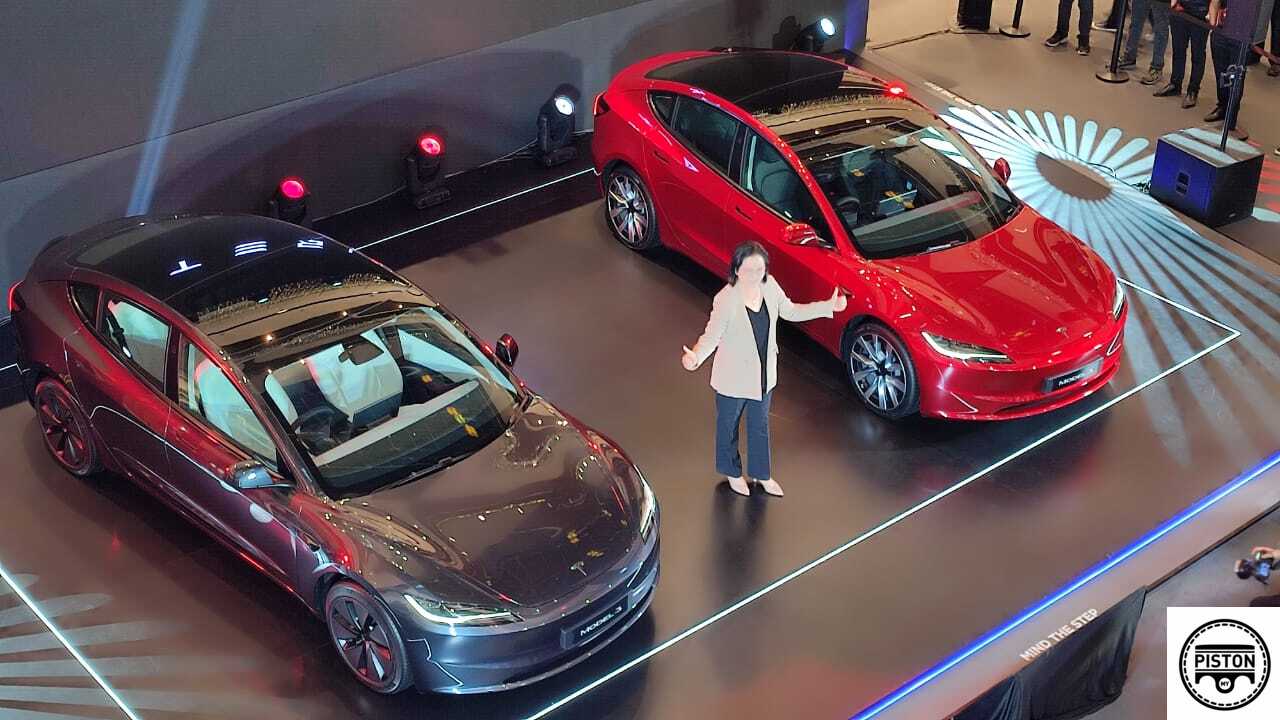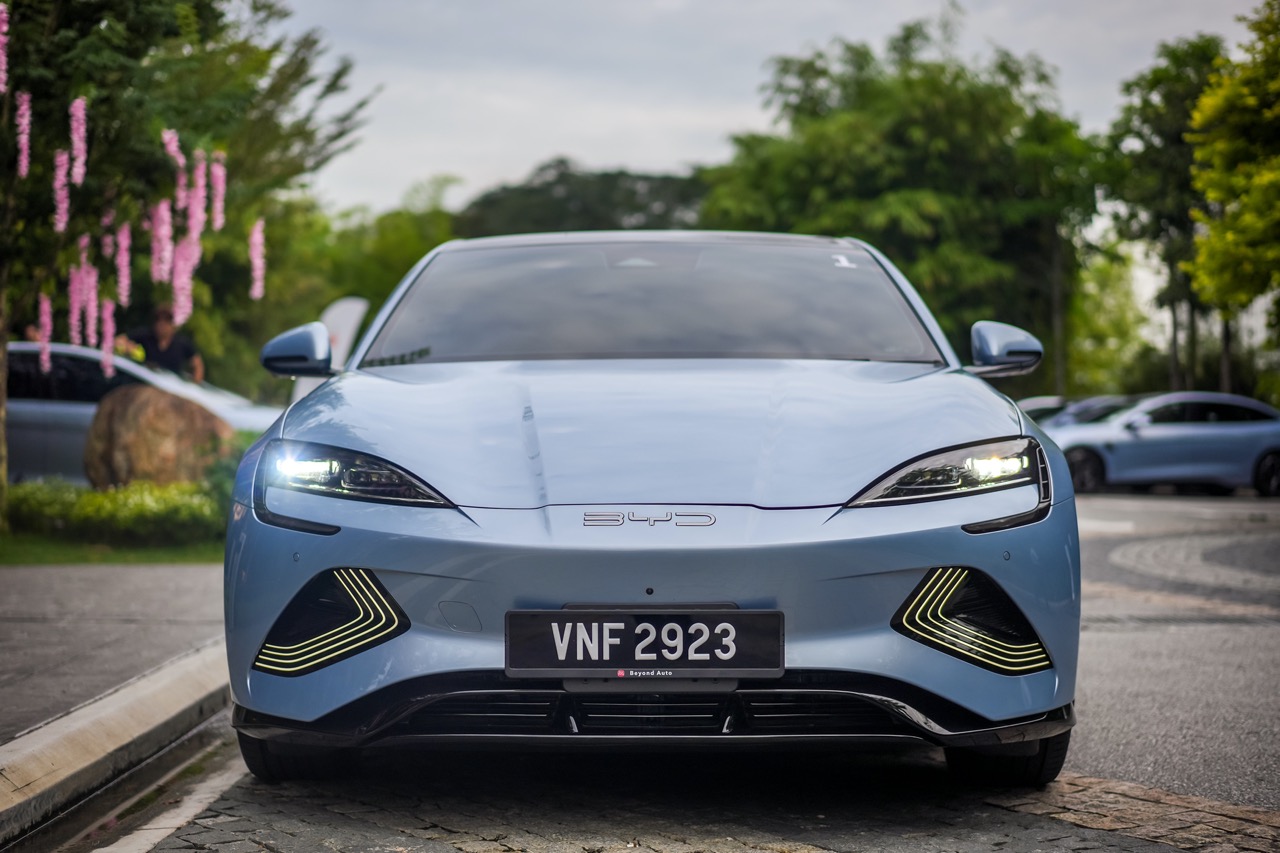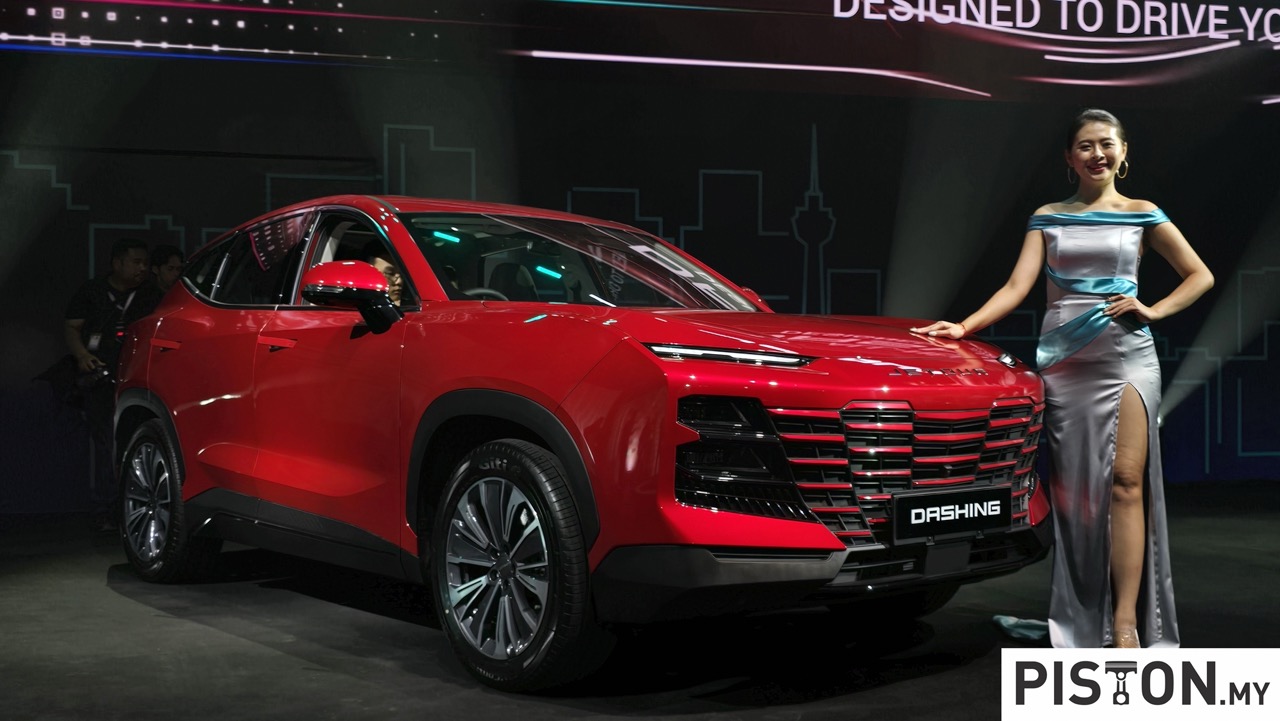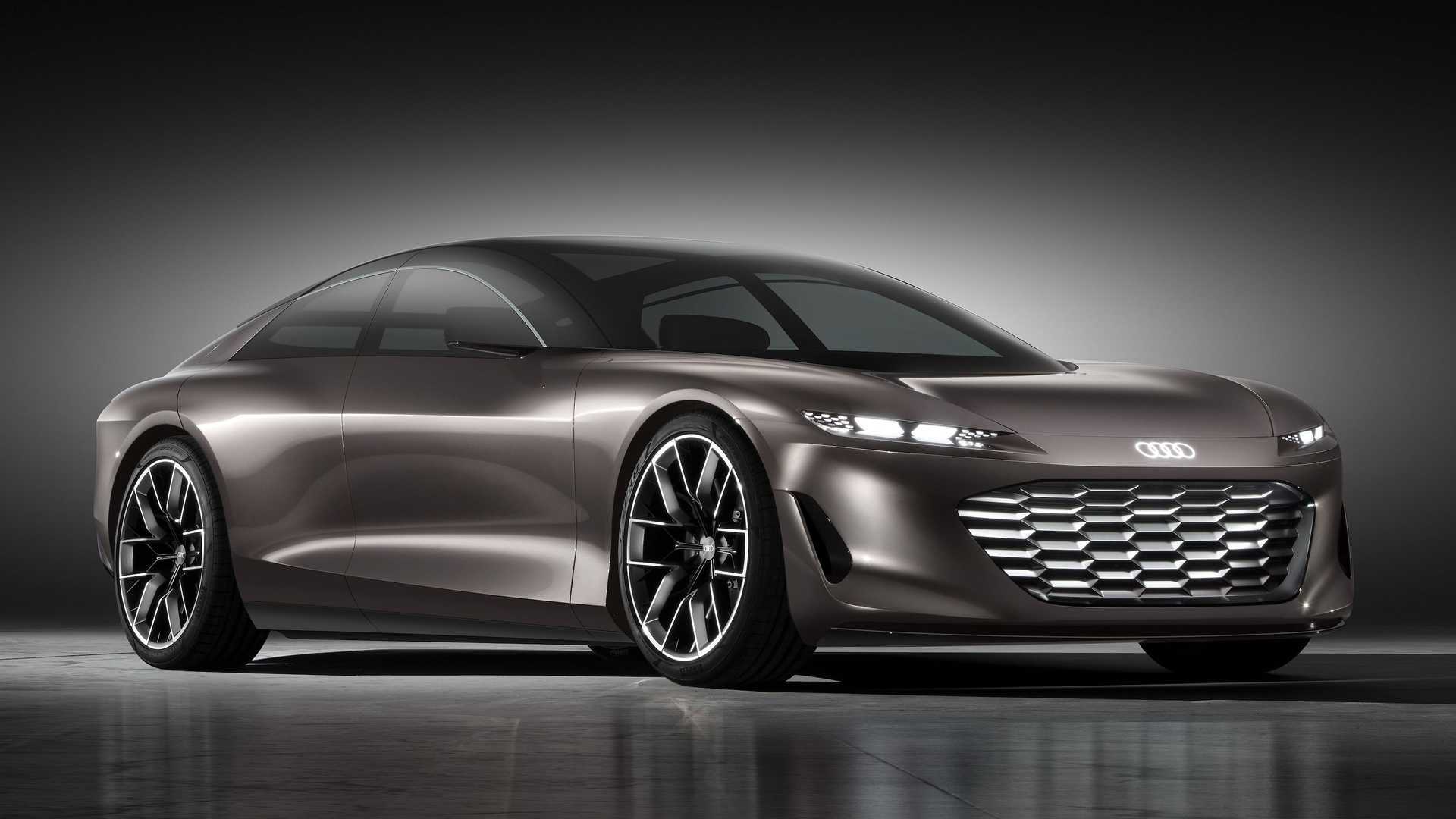Concept cars used to be fanciful models created by carmakers to dazzle visitors at motorshows. They had amazing technologies and features but a lot was also for show as it was either to complex or too expensive to put into production models. These days though, concept cars serve to preview the next generation of models and much of the technology shown is already under development.
With the Inception Concept presented by Peugeot at CES 2023 (the Consumer Electronics Show), the French carmaker is giving a preview of what its future models in the electric era will be like, and what advanced features they will have.
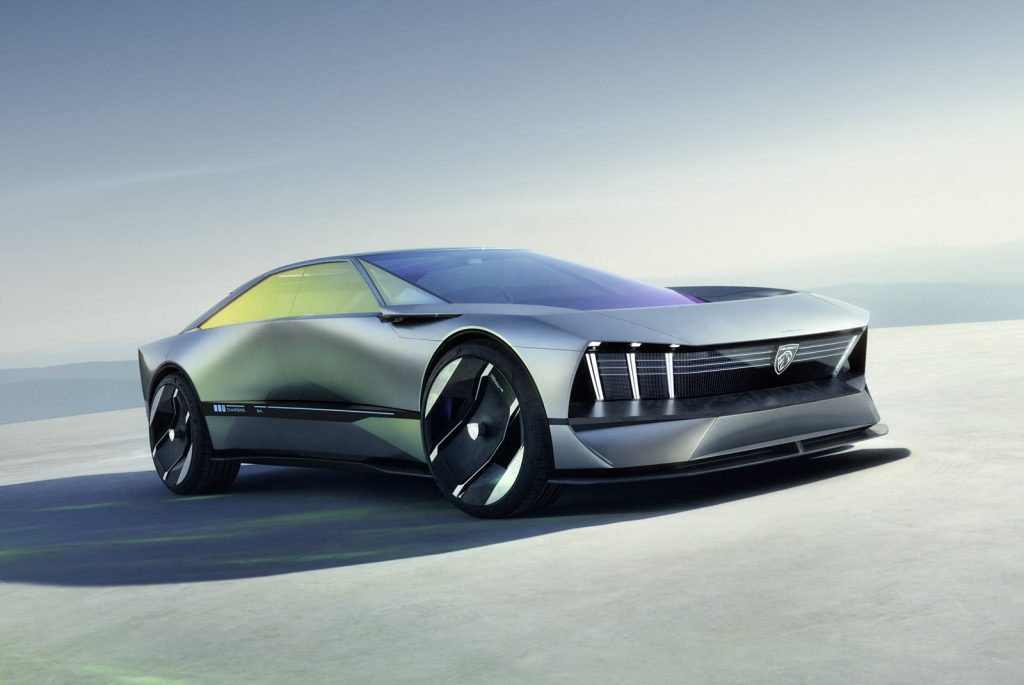
First of four dedicated BEV platforms
The Inception Concept uses one of the four future Stellantis Group ‘BEV-by-design’ platforms. These are completely new platforms and being so, they can be specifically dedicated to BEVs and exploit the full benefits of the differences in architecture with combustion vehicles.
The platform for the Inception Concept is known as the STLA Large Platform which accommodates the concept car’s sedan body measuring 5 metres in overall length with a low silhouette of 1.34 metres. The size has been deliberately chosen to highlight the many innovations of this manifesto.
Using 800V technology, the Inception Concept is powered by two compact electric motors – one at the front and the other at the rear – to provide all-wheel drive. The combined power output is 500 kW (680 bhp) which can take the car from 0 to 100 km/h in a time claimed to be less than 3 seconds.
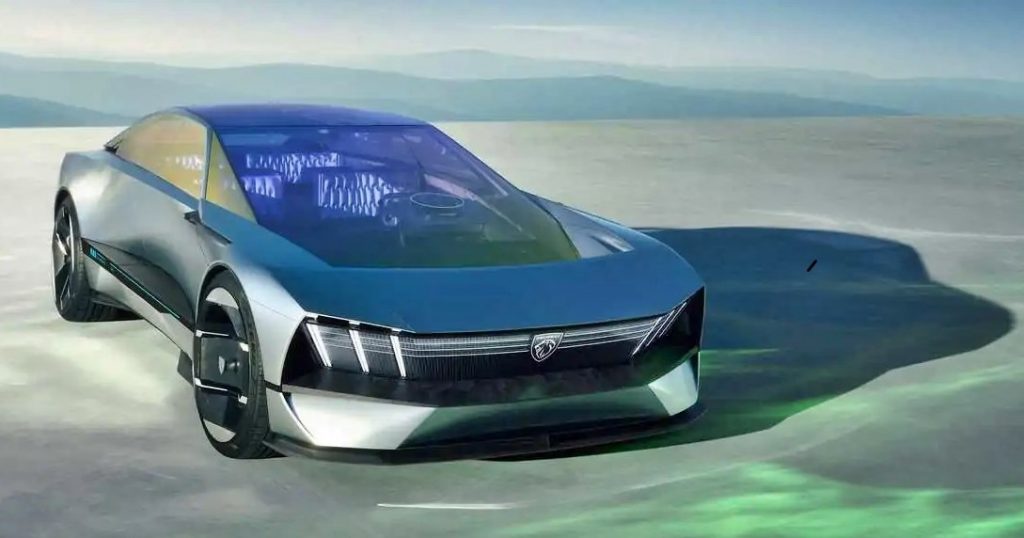
Range is, of course, a question that is of concern to EV buyers and for the Inception Concept, the claim is up to 800 kms from a fully charged battery pack. With efficient power consumption, a driver should be able to get 100 kms per 12.5 kWh.
The capacity of the battery pack is not mentioned but it will be able to recharge at a rate which provides 30 kms of range for each minute of charging, so it would take only 5 minutes to have a substantial range of 150 kms. The car is also designed to be recharged by induction, which means no need for a cable. Of course, the facility must also exist for such charging…

Steer-by-wire technology
The concept car has steer-by-wire technology which does away with the conventional mechanical steering linkages and transmits the driver’s inputs by digital electric signals. The technology is not new, though, as Infiniti was the first to introduce it on the Q50 in 2013. Like shift-by-wire, using electronic signals to transmit inputs should increase responsiveness and also save weight.
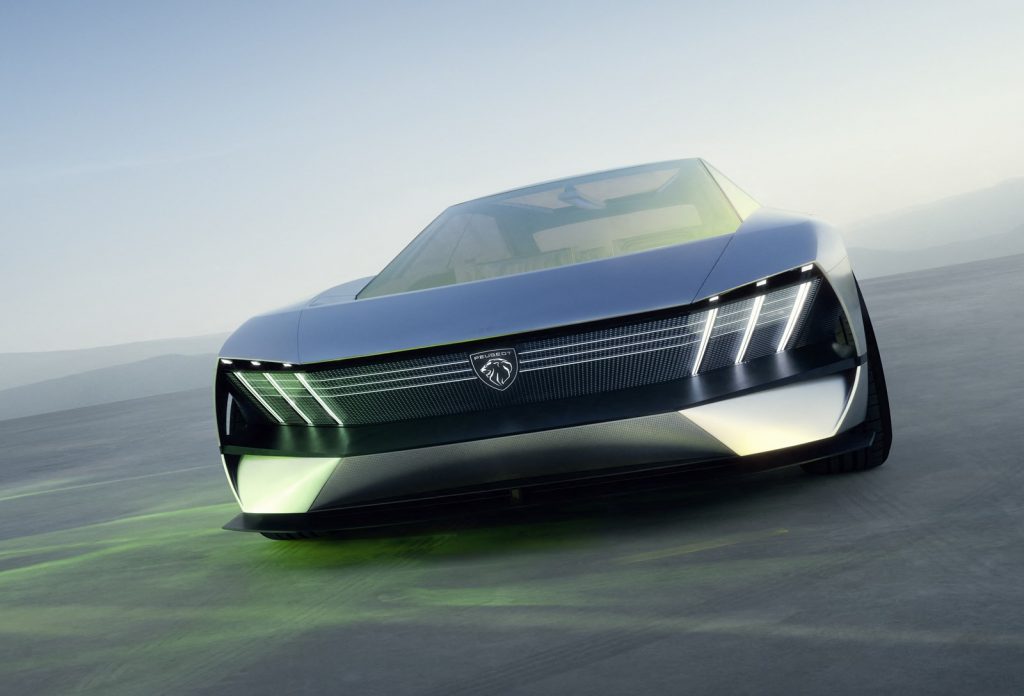
New design language
With a lion as part of its brand imagery, Peugeot has long associated its designs to feline creatures. For the Inception Concept, this is reinterpreted for the new era. It is a preview of the new design language that will be adopted for Peugeot models from 2025.
Simpler and more refined, the finish and textures are oriented and associated with the digital world. This new design switches between sensual lines and athletic curves, more geometric and sharper, such as the horizontal wing shoulders. For the designer, the challenge lay in the contrast between a dynamic profile – for a feline stance – and a passenger compartment designed as a glass capsule.
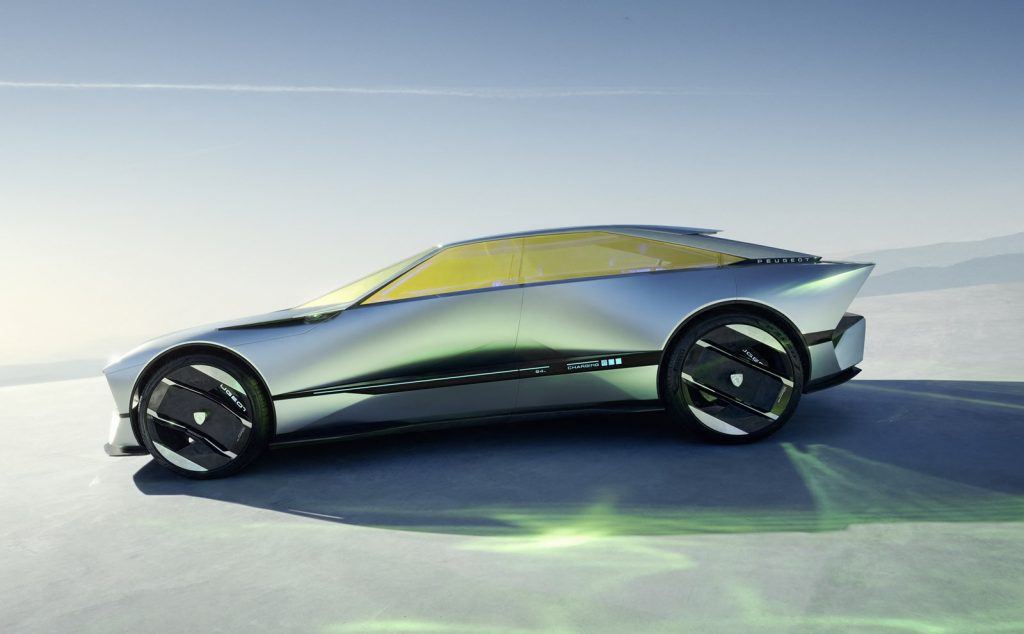
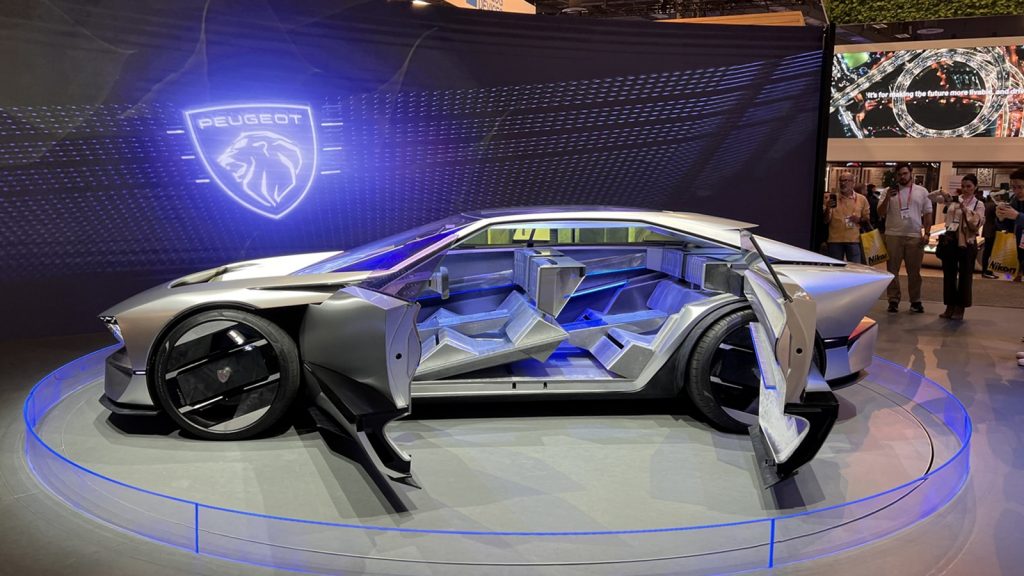
Seen from the side, the design still has the elegance of past Peugeot saloons while transitioning into the era of complete electrification. The seamless transition between the exterior and interior design is shown by the exclusive glazing which covers 7.25 square metres of the bodywork.
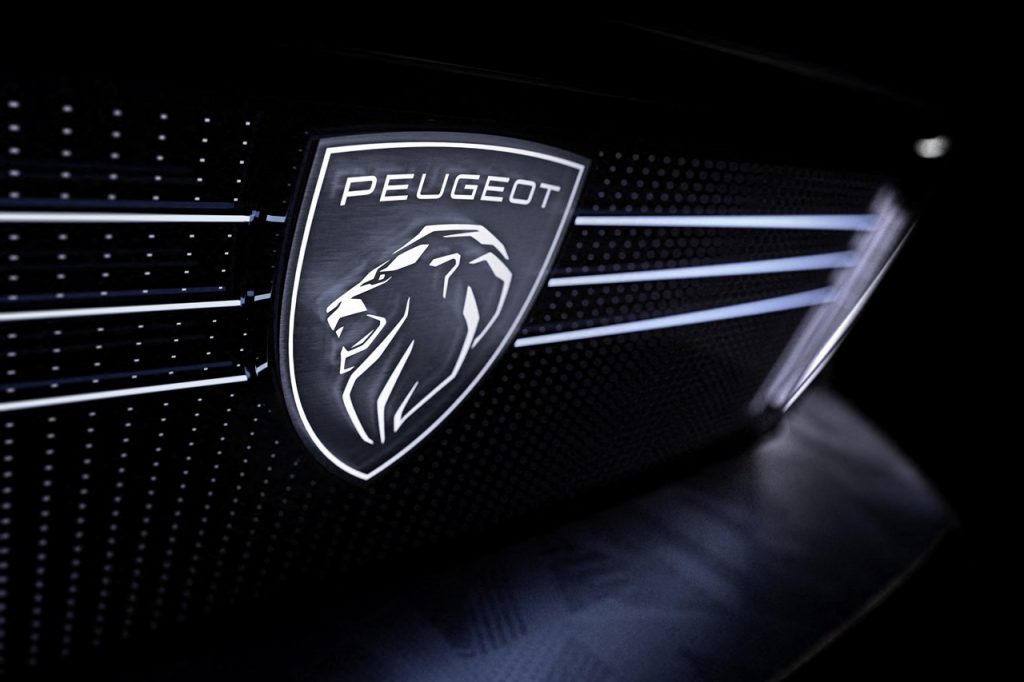
All the glazing (windscreen, side windows and quarter windows) is made from glass designed for architecture and specifically for the Inception Concept. The glass has exceptional thermal qualities and benefits from a multi-chrome treatment (treatment with metal oxides), a process initially used for the visors of astronauts’ helmets by NASA.
Called NARIMA glass, it has a warm reflection, in shades of yellow, and a colder transmission, in the bluish tones. On the outside, it is reflected on the neutral body colour; inside, it diffuses flashes of light on the materials, constantly modifying the reflections and tints. The treatment of the multi-chrome glass solves the thermal and anti-UV problem, maintaining comfort within the cabin.
The finish on the car is composed of very fine metal pigments and is single-coated, which means that much less energy is consumed during its application. Its ultra-quality appearance highlights the volumes of the bodywork and interacts, like the glazing, by tinting according to the external
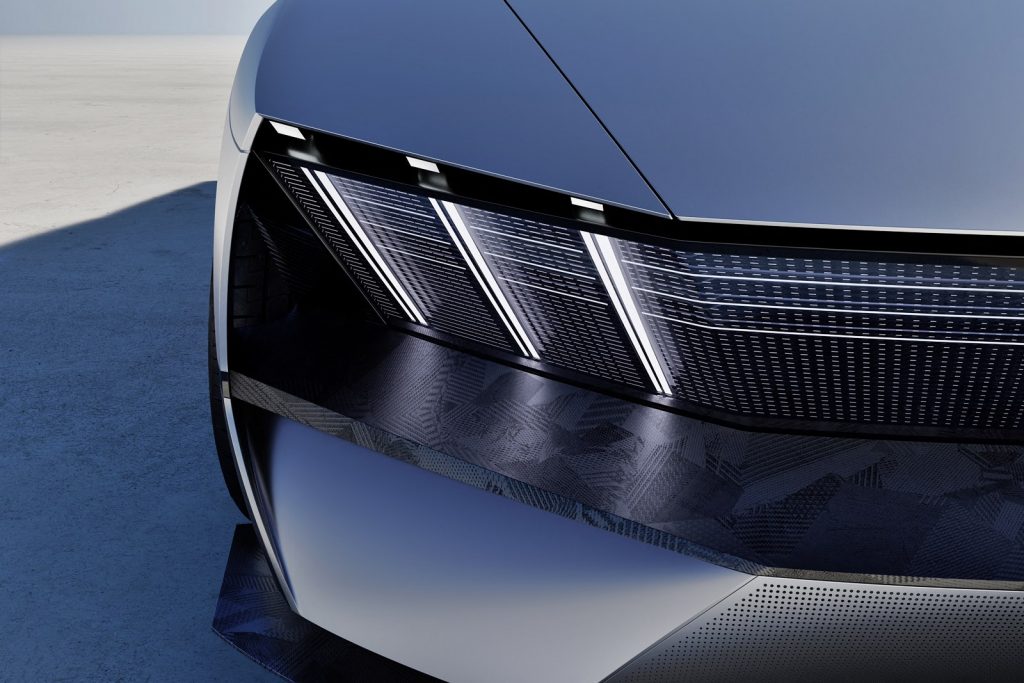
New Peugeot light signature
The front bumper has adopted an all-new Peugeot light signature which incorporates the 3 emblematic claws. This new, highly distinctive front end merges the entire front grille and the signature part into a single object that also houses the sensors. It is made up of a single piece of glass with the logo in the centre, magnified by the 3D luminescent effect.
This mask is lined by three thin horizontal bars crossed by the three claws. The four optical modules are housed under the glass mask, which is itself treated with a mirror effect. The latter is printed with INKJET digital technology.
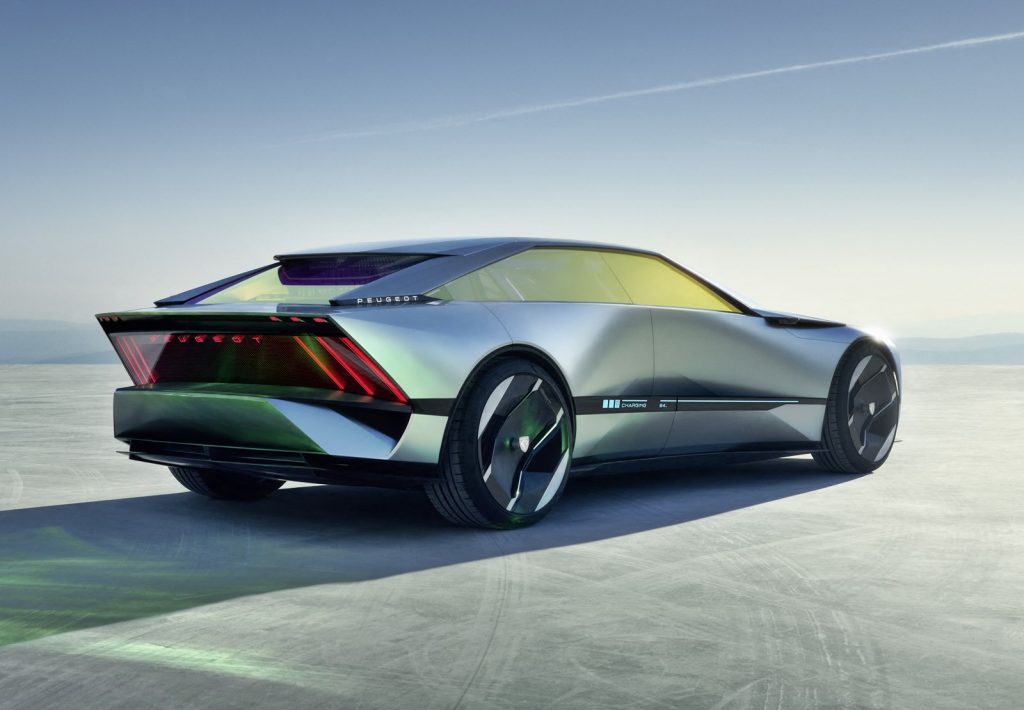
A TECH BAR, running horizontally through the door layer, has a flush screen which shows different messages to the outside world as the car’s occupants approach it. As they enter, sensors detect each person with artificial intelligence recognising the person and then making all the personal settings (eg seat posture, steering angle, temperature, etc).
The expressive rear end reflects the new front-end signature and has been given a very high-tech treatment. The three claws seem to ‘enter’ the car infinitely, thanks to the two layers of glass providing a special effect.
The wheels are special too: referred to as AERORIM wheels, they combine aerodynamics and aesthetics with a design on an axial symmetry. Forged textile inserts contribute to the aerodynamic effort, while aluminium inserts with micro-perforations underscore the very high-tech aspect of the design. The illuminated Lion emblem remains static when the wheel is turned and inside the wheel, the brake caliper is covered with mirror glass.
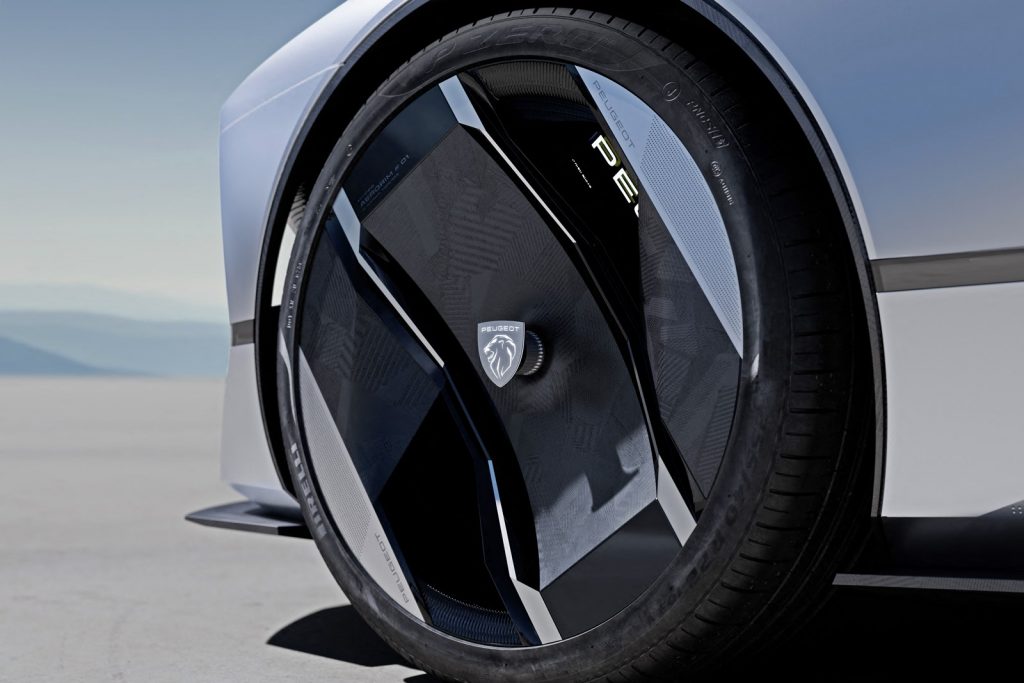
Hypersquare control system
Though it was first introduced 10 years ago with the first-generation 208, the Peugeot i-Cockpit has undergone evolutionary improvements. For the Inception Concept, the designers have gone for a completely new architecture, removing the steering wheel and the classic switchgears. Born digital and inspired by video games, the Hypersquare control system takes the i-Cockpit concept into the near future.
The Hypersquare with digital electric controls consists of a screen with circular cells in each of its four corners which have several functions. The centre of the Hypersquare is a tablet-type screen dedicated to the distribution of control information. For even more driving comfort, the rim of the Hypersquare is made from 3D printing, while in its centre, the digital glass screen provides a high-tech appearance.
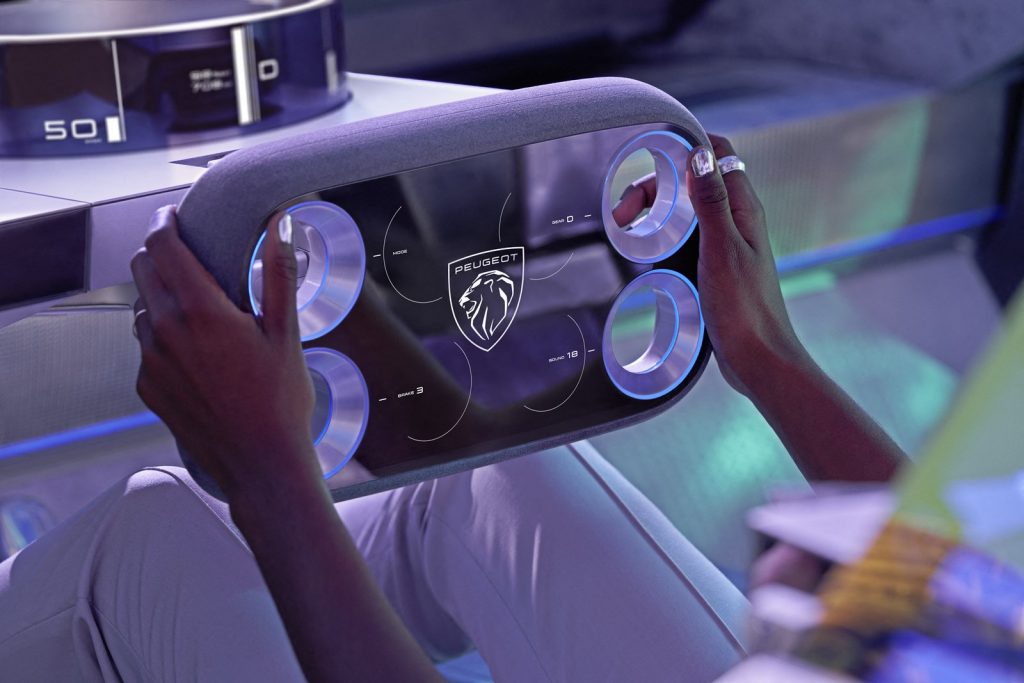
With its new Hypersquare control system, the all-new i-Cockpit becomes more intuitive. Fingertip control manages all driving parameters in conjunction with steer-by-wire technology. Likened to a videogame but in real life, the ergonomics of the Hypersquare, which replaces the classic steering wheel, create a new, natural, simpler and safer way of driving.
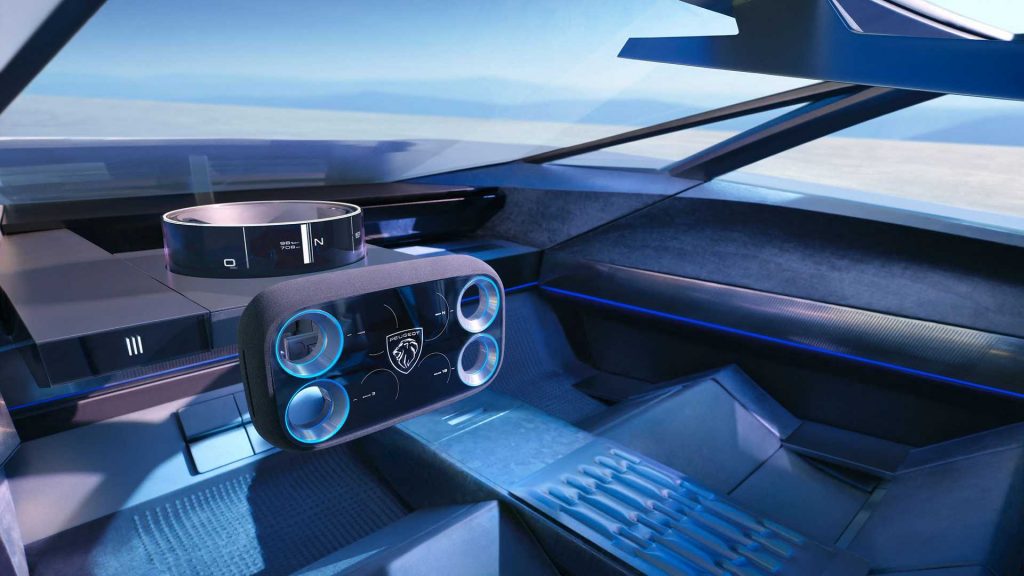
Ready for autonomous motoring
Preparing for Level 4 autonomous motoring, there is a STLA AutoDrive mode during which the HYPERSQUARE retracts. A large panoramic screen then slides out from the floor to offer a new passenger compartment experience. Peugeot’s goal is to introduce the Hypersquare on a next generation vehicle in the range before the end of the decade.
As there will no longer be a dashboard as we know it today, the driver and occupants will have a completely open view of the road and have a new experience. This led the interior designers to create a new vision of the interior for a grand tourer.
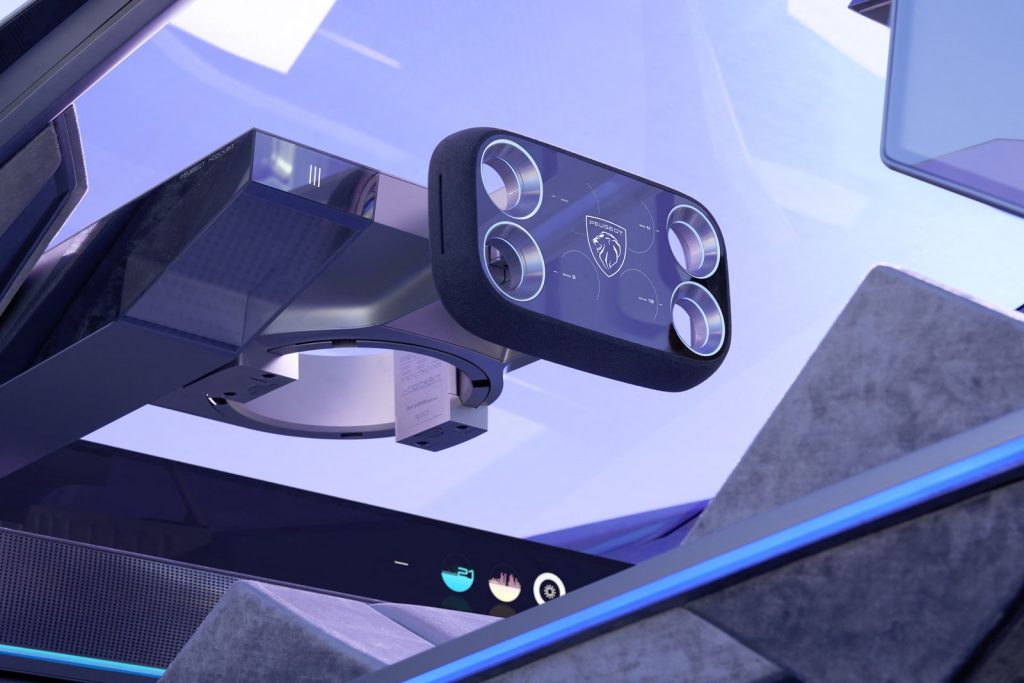
Besides new, more elongated seating positions, the seat proportions have been reworked, with more width and immersive comfort. The architecture and apparent structure of each seat – called Comfort Fit – can be adjusted as closely as possible to the body. It is no longer a question of sitting in a car seat, but of settling into a new type of furniture, adapted to the conditions of dynamic driving, or being able to relax when driving is left to the computer.
The Comfort Fit seats incorporate real adjustable mattresses at the shoulders. This electro-welded, single-material, easy-to-recycle upholstery is derived from inflatable pockets recovered from classic seats.
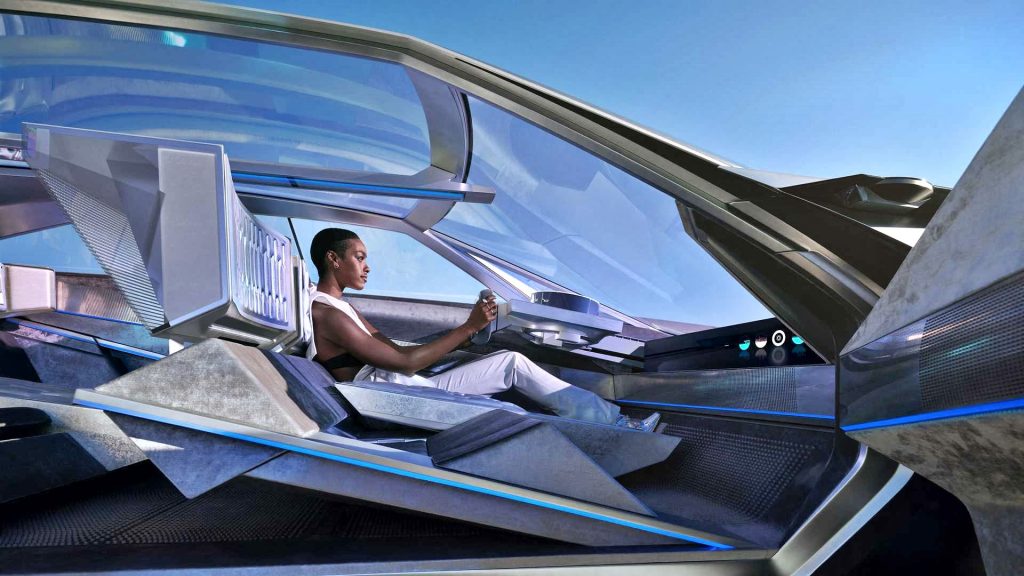
The seats and floor are covered with a very special velvet, 100% recycled polyester, with a very metallic sheen to play with the light diffused by the glass capsule. This material, 100% recycled, is printed with 3D patterns to act as a floormat. The continuity between the seats and the floor can thus be achieved with a single material.
“Peugeot is committed to the electrification of its range. From next year, 100% of the vehicles in the range will be electrified and in the next two years, five new 100% electric models will be launched. Our ambition is simple: to make Peugeot the leading electric brand in Europe by 2030. This objective and ambitious vision pave the way for a radical transformation for the Brand. It is embodied today in the Peugeot Inception Concept which marks the beginning of a new era!” said Linda Jackson, CEO of the Peugeot brand, at the debut of the concept car during CES 2023 in Las Vegas.




